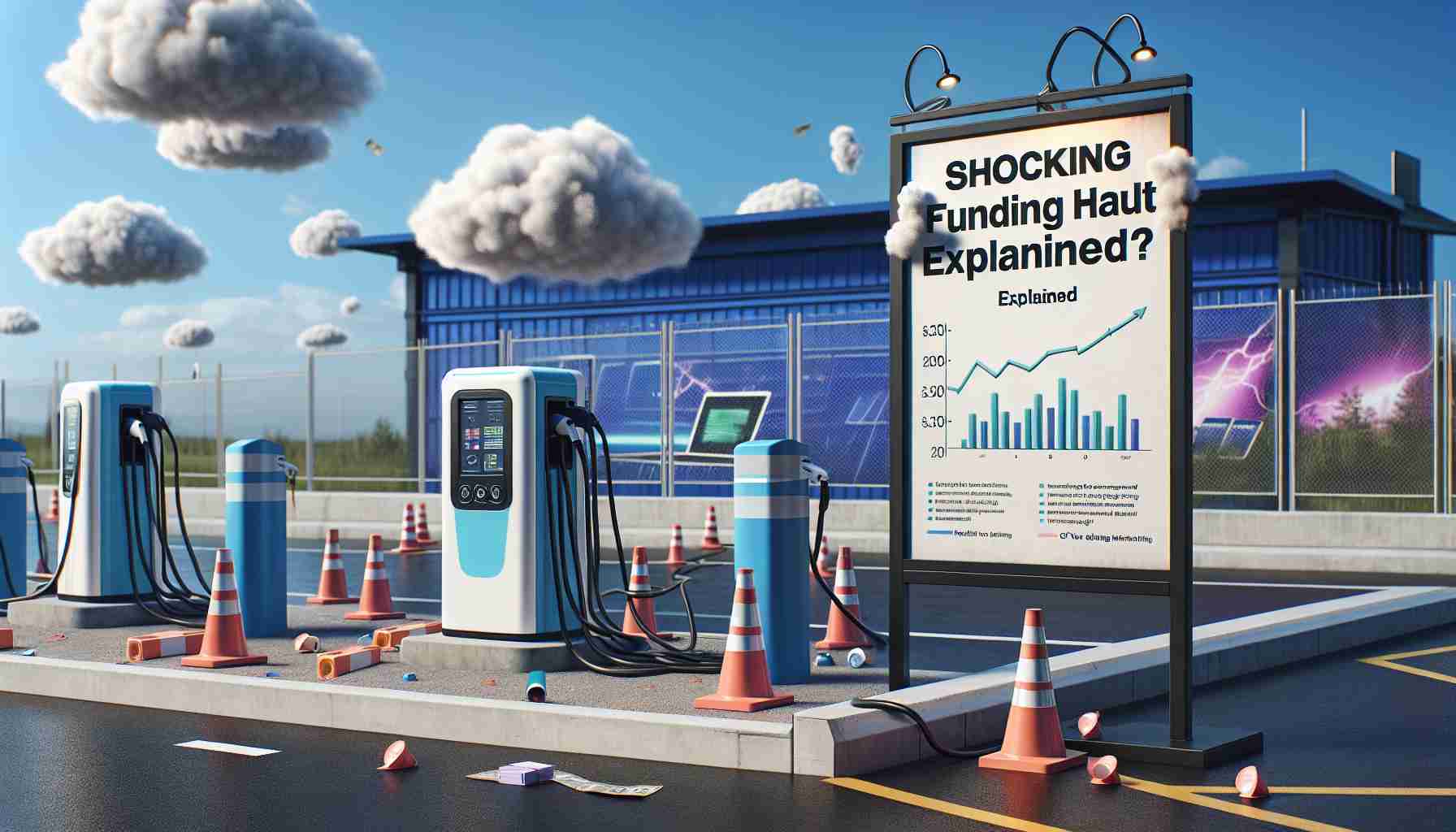- The pause in funding for the NEVI Formula Program has halted over $23 million in grants for crucial charging projects in Wisconsin, impacting local businesses.
- Environmental advocates warn that this funding interruption could hinder progress in combatting climate change.
- Without adequate charging infrastructure, the widespread adoption of electric vehicles may falter, as the U.S. has only 0.4 chargers available per EV.
- The situation threatens job security in the clean energy sector, especially for companies preparing to meet the increasing demand for EV chargers.
- 87% of potential EV buyers express concerns about charging accessibility, highlighting the urgent need for improved infrastructure.
- Immediate action is required from stakeholders to reinstate funding and maintain momentum toward electrification.
The rapid rise of electric vehicles (EVs) is encountering a major roadblock: a sudden funding pause for the National Electric Vehicle Infrastructure (NEVI) Formula Program. This unsettling decision by the U.S. Department of Transportation has halted over $23 million in grants for 53 essential charging projects in Wisconsin, throwing local businesses and job growth into disarray.
As environmental advocates raise their voices, warning of dire consequences in the fight against climate change, the implications are stark. Without a robust network of charging stations, the journey to a sustainable future becomes perilous. Job losses loom large, particularly for ambitious companies like Ingeteam, which had been gearing up to meet the surging demand for EV chargers in Milwaukee.
This tumultuous pause threatens not only job security in the clean energy sector but also raises concerns about the overall adoption of electric vehicles across the nation. A recent study reveals that the U.S. falls short on charging infrastructure; with only 0.4 chargers available per EV, the gap must close quickly to avoid stalling the market’s growth. Even potential buyers are anxious, with a staggering 87% expressing doubts about charging accessibility.
The key takeaway here? The funding suspension could significantly curb progress toward a greener transport horizon. Stakeholders must rally for swift action to reinstate financing, or we risk losing the momentum that electrification has generated. As the clock ticks, the future of our clean energy ambitions is in jeopardy. Will we push past this obstacle or see our EV hopes fade away?
Is the Future of Electric Vehicles at Risk? Critical Insights on Recent Funding Cuts
Understanding the Impact of NEVI Funding Suspension on Electric Vehicle Adoption
The landscape of electric vehicles (EVs) in the United States faces hurdles due to a sudden funding pause for the National Electric Vehicle Infrastructure (NEVI) Formula Program. This decision by the U.S. Department of Transportation has halted over $23 million in grants crucial for infrastructure development, particularly affecting 53 charging projects in Wisconsin. The ramifications are significant and multifaceted, impacting job security, market growth, and environmental goals.
# Key Insights on EV Charging Infrastructure
1. Market Forecast: Analysts predict that the global EV market will continue to grow substantially, with a projected compound annual growth rate (CAGR) of 22.6% from 2022 to 2030. However, the growth could be stunted without a corresponding increase in charging infrastructure.
2. Pros and Cons:
– Pros: Adoption of EVs leads to lower greenhouse gas emissions, reduced dependency on fossil fuels, and significant long-term savings on fuel and maintenance costs.
– Cons: The current lack of charging infrastructure poses a major hurdle, contributing to range anxiety among potential EV owners.
3. Use Cases and Limitations:
– Use Cases: EVs are particularly beneficial in urban settings where charging stations can be installed strategically, enabling convenient access for daily commuting.
– Limitations: Remote areas often lack charging facilities, which limits the practicality of EVs for certain populations and prevents broader adoption.
# Answering Key Questions
1. What is the direct impact of charging infrastructure on EV adoption?
The availability of charging stations directly influences consumer confidence in EV technology. With only 0.4 chargers per EV currently in the U.S., potential buyers feel uncomfortable committing to an electric vehicle without assurance of readily available charging options.
2. How does the funding pause affect job growth in the EV sector?
The suspension of funds for projects threatens job creation in the clean energy sector, particularly for companies like Ingeteam. The uncertainty surrounding infrastructure development can lead to layoffs and decreased hiring as businesses adjust to the halted projects.
3. What must be done to overcome these challenges?
Advocates for EV adoption need to mobilize support for reopening NEVI funding. Increased lobbying from environmental groups and the automotive industry can encourage policymakers to prioritize EV infrastructure funding, facilitating quicker development of charging networks.
# Current Trends and Future Predictions
As the demand for electric vehicles continues to escalate, a robust and widespread charging infrastructure will be critical. Trends indicate that with renewed funding, collaborations between local government and private sectors could foster innovative solutions, ensuring that charging stations become as ubiquitous as gas stations. Furthermore, technological advancements such as ultra-fast charging and renewable energy integrations could enhance the user experience and sustainability of EVs.
# Exploring Sustainability and Innovations
Sustainability is at the forefront of discussions in the EV market. Innovations in battery technology, such as solid-state batteries, promise to increase driving range and reduce charging times. These can further alleviate concerns regarding the limitations of current charging infrastructure.
For further insights and ongoing updates, visit Energy.gov to learn more about advancements in electric vehicle technology and infrastructure initiatives.














